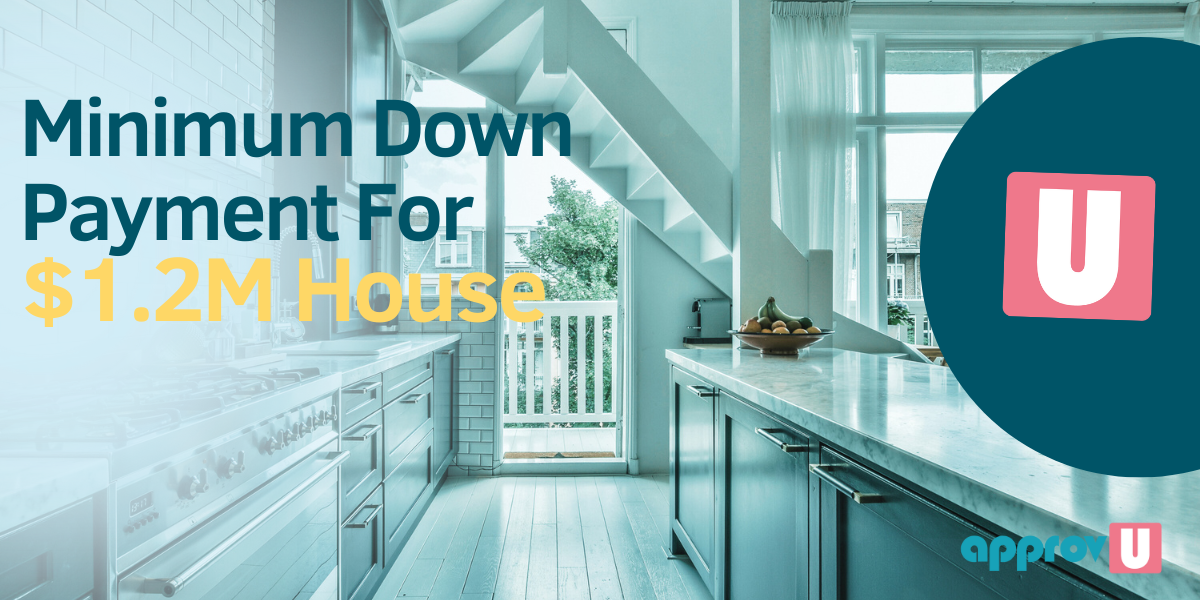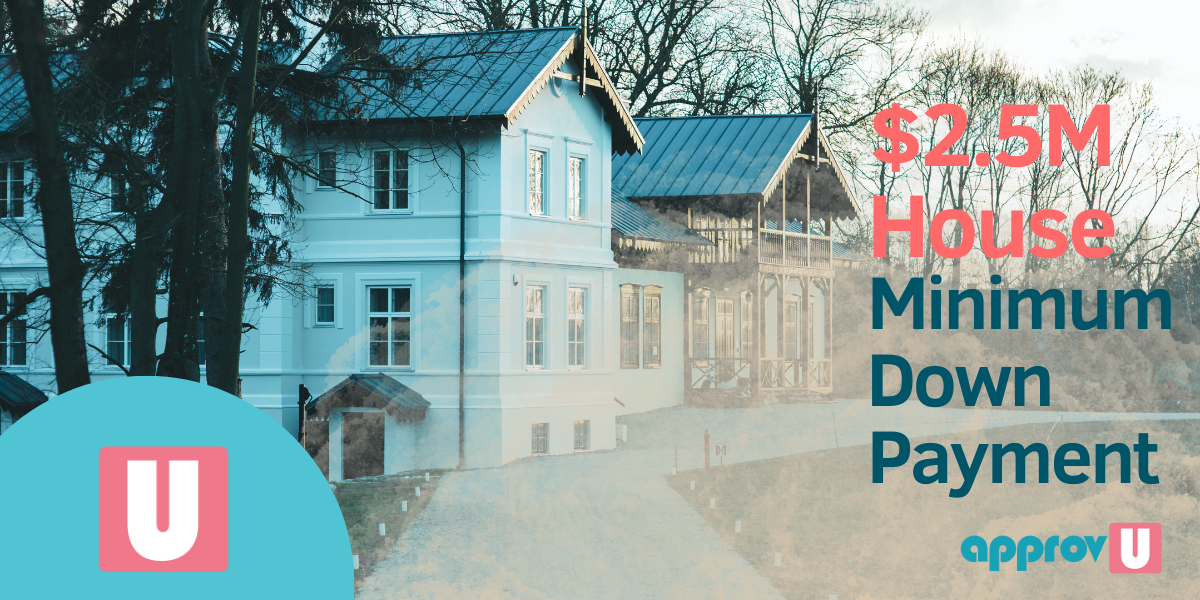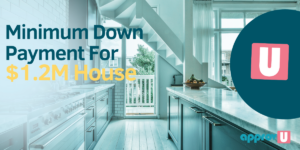Buying a house is a significant milestone in your life, one that requires careful financial planning and an understanding of the mortgage process.
One of the first questions you might ask yourself is, “What Is the Minimum Down Payment for a $400K House?”
The answer to this question isn’t straightforward and depends on your credit score, the intended use of the property, and your ability to prove your income.
Whether you’re a first-time homebuyer or looking to expand your investment portfolio, understanding these requirements is the first step towards making informed decisions about your home purchase.
What Is a Down Payment and Its Role in Home Purchase?
A down payment is your initial payment when purchasing a house, usually a percentage of the total price.
It signifies your commitment to the mortgage process and financial stability to lenders.
The significance of a down payment in home buying is immense.
It affects the mortgage amount and terms, such as interest rates and monthly payments.
A larger down payment can yield more favourable mortgage terms by reducing the lender’s risk.
Also, the more you invest upfront, the lower your risk as a borrower.
$400K House Down Payment’s Impact on Mortgage Insurance and Terms
A down payment under 20% necessitates mortgage default insurance, safeguarding lenders against defaults.
This enables home purchases with minimal initial payments, though it adds to your costs.
The down payment size influences your insurance premiums; less upfront increases the premiums since it covers a larger loan portion.
Conversely, 20% or higher down payments remove the need for this insurance and often secure lower mortgage rates, as such borrowers are considered lower risk.
This can lead to significant long-term savings via reduced interest rates.
Learning how your down payment affects your mortgage setup is essential.
It’s not just an upfront cost but an investment impacting your home’s long-term affordability and financial stability.
The Impact of Credit Scores on Down Payments for a $400K House
Your credit score is more than just a number; it’s a snapshot of your financial reliability and a key factor lenders use to evaluate your mortgage application.
This score, derived from your credit history, influences the likelihood of being approved for a mortgage and the terms and conditions of your loan, including the down payment requirement.
Low Credit Score Down Payment Requirements
With a credit score below 600, homeownership demands a higher initial investment.
Lenders consider lower scores riskier, leading to stricter borrowing terms.
You must make a 20% minimum down payment, which offsets perceived risk and provides lenders with a stronger security buffer.
Down Payment Requirements with Credit Scores Above 600
However, the landscape changes significantly if your credit score is 600 or above.
A credit score in this range opens the door to more favourable borrowing terms, notably lowering the minimum down payment requirement to just 5% of the home’s value.
This reduction is possible because lenders view you as a lower-risk borrower, more likely to make mortgage payments on time and in full.
Credit Health and Financial Impacts
In Canada’s real estate market, where prices can be high, the gap between a 5% and 20% down payment is substantial.
For a $400k house, a 5% down payment equals $20,000, while a 20% down payment totals $80,000—a significant contrast affecting homebuying feasibility and financial plans.
This tiered down payment system, tied to credit scores, emphasizes the critical nature of maintaining good credit.
Your credit score directly influences your ability to buy a home and the upfront cash required.
Enhancing or preserving a strong credit score is vital groundwork for homeownership, impacting mortgage approval odds and financial terms.
Property Use and Down Payment for $400000 House
Your property’s intended use shapes the lender’s down payment requirements.
The key difference lies between owner-occupied residences and rental properties.
Owner-Occupied Property Down Payment
Lenders typically offer better down payment terms for owner-occupied properties due to lower risk perception.
Living in the purchased property implies a greater commitment to maintenance and timely mortgage payments.
With a credit score of 600 or higher, you may qualify for a down payment as low as 5% (of $20,000) of the purchase price, making homeownership more attainable for a wider audience.
Investment Property Down Payment Requirement
Buying a property for rental purposes demands a 20% minimum down payment, irrespective of credit score.
This higher requirement stems from the perceived higher risk linked with rental properties.
Lenders view rental properties as potentially more financially volatile due to fluctuating rental income, tenant-related damages, and vacancy periods affecting mortgage payment coverage.
Thus, a larger down payment is mandated to offset these risks.
Property Use and Down Payment Considerations
Choosing between purchasing a property for a personal residence or investment significantly impacts your financial obligations.
Unlike buying a home to live in (where the minimum down payment can be 5%), rental properties typically require a 20% down payment.
This is because lenders see them as riskier.
A bigger down payment gives you more “skin in the game” from the start, so you’ll be more invested in maintaining the property’s value – protecting your investment.
Income Verification’s Impact on Down Payments for $400K House
Income verification is crucial for mortgage approvals.
Whether you provide traditional tax documents or fall into the alternative mortgage applicant category, understanding its implications on down payment requirements is vital.
Confirmed Income and Down Payment
Submitting official tax documents like T4 slips and notices of assessment isn’t just paperwork—it’s crucial for getting approved for a mortgage.
These documents provide concrete proof of your financial history and income, assuring lenders that you have a stable and adequate income to handle your mortgage payments.
Lenders will qualify with a 5% down payment.
These documents are essential.
They give lenders an accurate picture of your financial health, helping them determine if you can afford the home you want to buy.
Your T4 slip from your employer shows your yearly earnings, while your notice of assessment from the Canada Revenue Agency confirms your income and tax situation.
Together, they give lenders a comprehensive view of your finances, which is crucial for securing favourable mortgage terms.
Down Payment Guidelines for Unverified Income
The mortgage journey takes a different route for those unable to provide standard income documents—common among self-employed individuals, freelancers, or those with non-traditional income.
Termed “alternative mortgage applicants” face higher-risk classification due to the lack of conventional income verification.
These applicants encounter unique hurdles, requiring a minimum 20% down payment.
This higher threshold safeguards lenders against the perceived risk of lending without traditional income proof.
It’s a significant upfront investment, emphasizing the need for added security.
Scenario Analysis: $400000 House Down Payment
Explore down payment requirements with a $400k Canadian house purchase.
Considering your financial status and property use, this analysis sheds light on your needed savings.
Scenario 1: Buying a Home to Live In, Good Credit, Regular Income
Great news: if you plan to buy a $400k home, have a credit score above 600, and can prove your income with tax documents.
You likely qualify for the lowest down payment option!
- Minimum Down Payment: 5% of the purchase price
- For a $400k House: That’s just $20,000
You’ll still need mortgage default insurance (since your down payment is less than 20%), but this low upfront cost makes owning a home much more affordable.
Scenario 2: Lower Credit, “Tricky” Income, or Buying to Rent
Things are different if any of these apply:
- Your credit score is below 600
- You’re self-employed, and/or income is hard to prove
- You’re buying the house to rent out
Lenders will see this as riskier and require a much higher down payment:
- Minimum Down Payment: 20% of the purchase price
- For a $400k House: You’ll need $80,000
This protects the lender if things go wrong financially. It also means you have to save longer or adjust your home-buying plans.
Navigating Your Scenario
Knowing if you’re in Scenario 1 or 2 is the first step to planning your home purchase.
Here’s what to do based on where you fall:
Scenario 1 (Good credit, easy-to-prove income, living in the home)
- Focus on maintaining or improving your credit score.
- Make sure lenders can easily verify your income with tax documents.
- This helps you qualify for that low-down payment option!
Scenario 2 (Lower credit, income hard to prove, or buying to rent)
- Start working towards a bigger down payment goal.
- Look into ways to improve your credit or get your income easier to verify.
- This might mean adjusting when you plan to buy.
Knowing where you stand helps you make a solid plan to get into your own home!
Saving for Down Payment: Preparation Tips
- Set a Target Savings Goal: Calculate your exact down payment requirement based on your anticipated purchase price and the applicable down payment percentage. For a $400k house, this could be $20,000 (5%) or $80,000 (20%), depending on your scenario.
- Create a Budget: Analyze your income and expenses to identify where to cut back. Allocate a portion of your monthly income specifically towards your down payment savings.
- Open a High-Interest Savings Account: Consider putting your down payment savings in a high-interest account or a Tax-Free Savings Account (TFSA) to maximize your savings growth.
- Automate Your Savings: Set up automatic transfers from your checking account to your savings account right after payday to ensure you consistently save without the temptation to spend.
- Cut Unnecessary Expenses: Review your spending habits and reduce non-essential costs like dining out, rarely used subscriptions and luxury items.
- Increase Your Income: Find opportunities to earn extra income through freelancing, part-time jobs, or selling unused items.
- Utilize Windfalls Wisely: Allocate any unexpected windfalls, such as tax refunds, bonuses, or gifts, directly to your down payment savings.
Government Down Payment Assistance Programs
- Home Buyers’ Plan (HBP): Explore the Home Buyers’ Plan that allows you to withdraw up to $35,000 from your Registered Retirement Savings Plans (RRSPs) tax-free to buy or build a qualifying home, provided you repay the amount within 15 years.
- Land Transfer Tax Rebates: Check if you’re eligible for any land transfer tax rebates available in some provinces for first-time homebuyers, which can help reduce home purchase costs.
- Provincial and Territorial Incentives: Research any additional provincial or territorial incentives available to you, as many regions offer unique programs to assist with the home buying process.
Conclusion: Down Payment for a $400K House
Buying a home is a huge accomplishment, and understanding down payments is a key part of the process.
Your credit score, income, and how you’ll use the house affect how much you need to save.
There’s no single “right” path to homeownership.
Here’s what to remember:
- Set realistic goals. Figure out your target down payment and make a plan.
- Get financially organized. Track your spending, cut where you can, and look for ways to boost your income.
- Use every resource. Explore government programs that can help with your down payment.
Owning a home is hard work but incredibly rewarding!
Every bit of saving and planning you do now gets you closer to owning your place and building your desired future.
















